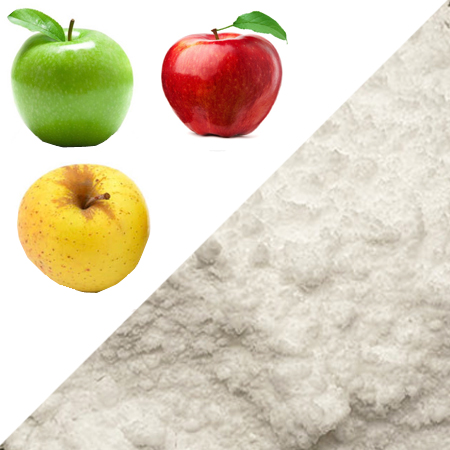Malic Acid Powder
Product Name: Malic Acid Powder
Botanic Name: Malic Acid
Description:
Malic acid is an exfoliating ingredient derived from unripe fruits. It's technically a beta hydroxy acid ingredient but is typically classified as an alpha hydroxy acid (AHA) ingredient because its hydroxyl group in the alpha position is believed to be dominant to the beta hydroxyl group. Malic acid is an organic compound with the molecular formula C₄H₆O₅. It is a dicarboxylic acid that is made by all living organisms, contributes to the sour taste of fruits, and is used as a food and cosmetic additive. Malic acid is sour and acidic. This helps to clear away dead skin cells when applied to the skin. White or nearly white, crystalline powder or granules having a strongly acid taste. One g dissolves in 0.8mL of water and in 1.4 mL of alcohol. Malic acid is a fine white to off-white, fine granule powder. Malic acid is a member of the alpha hydroxy acid (AHA) group and in skin care products it is often used as an active ingredient in exfoliants and chemical peels.
Applications:
Malic acid in skin care products is celebrated for its ability to brighten the skin and smooth its texture. That's why it's a common ingredient in anti-aging creams. According to a brain-skin connection study , higher stress can worsen skin conditions like eczema, acne, and premature aging. Malic acid in skin care products is celebrated for its ability to brighten the skin and smooth its texture. That's why it's a common ingredient in anti-aging creams. According to a brain-skinconnection study , higher stress can worsen skin conditions like eczema, acne, and premature aging. As flavoring agent or pH adjuster, Malic Acid is used in food and non-food applications, including: beverages, canned fruits and vegetables, desserts, jams/jellies, powdered mixes, wines, confectionery, pharmaceuticals, nutritional supplements, and pet foods.
Malic acid is sour and acidic. This helps to clear away dead skin cells when applied to the skin.
Usage rate: 1-3%.
pH: 3-7.
Solubility: Water Soluble.
CAS Number: 97-67-6.
EINECS/ELINCS No: 202-601-5.
Origin: China.









